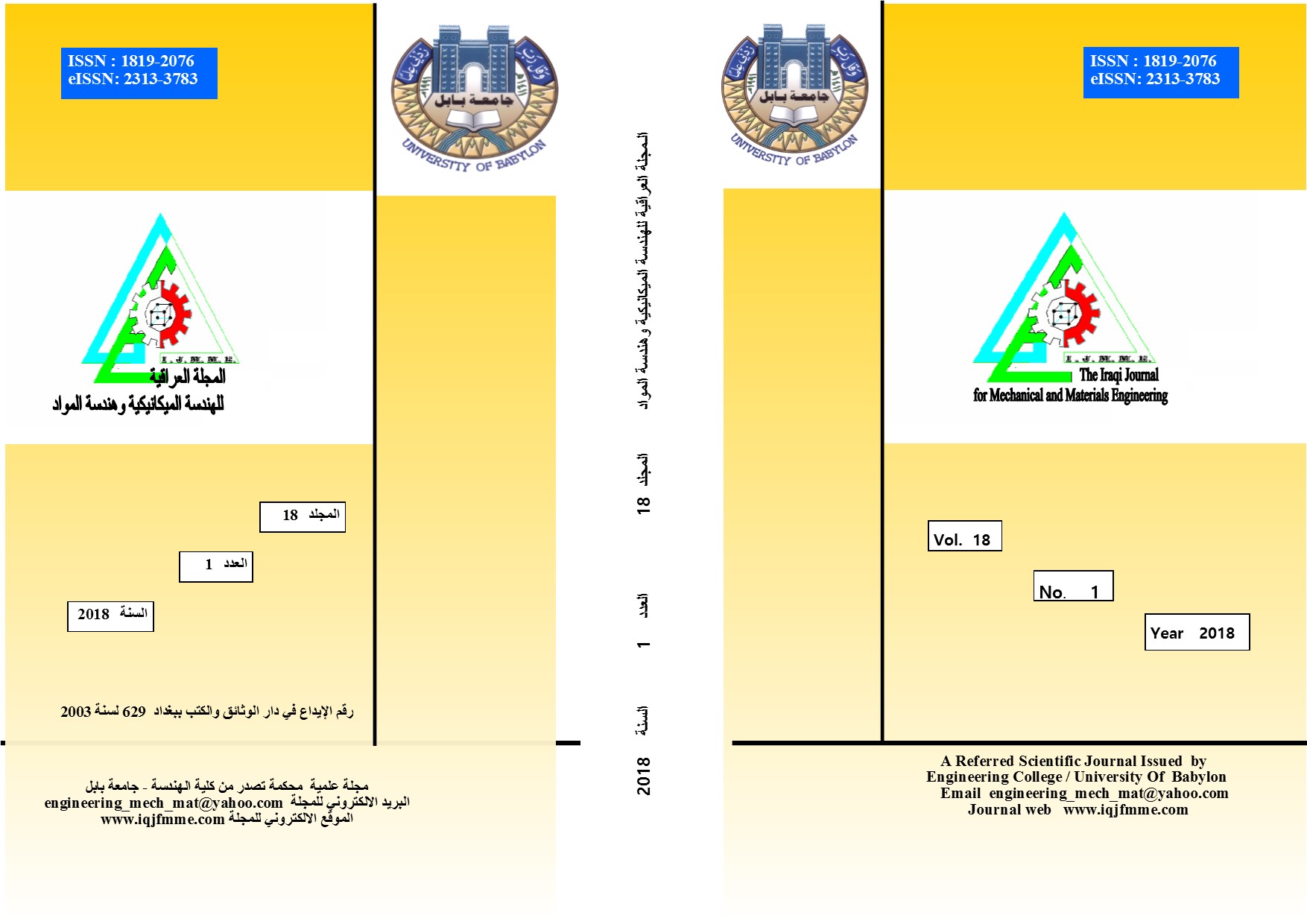Abstract
The important role in the performance of machined parts and structures is residual stresses,
namely, in the following aspects corrosion resistance, fatigue life and part distortion. The
aim of this research was to predict the residual stresses in aluminum alloy Al-6061
workpiece after machining; this prediction of residual stresses was applied with different
value of cutting speed, feed rate and depth of cut using Taguchi method.
The model is verified with experimental measurements of residual stresses. With the
analytical model presented in this work, Feed rate is the most important variable that affect
on maximum residual stress after that cutting depth and rotational speed substantial
reduction in computational time is achieved in the predictions of residual stresses. The result
of this research is the contribution of depth of cut, rotational speed and feed with respect to
residual stress is (67.07, 24.8 and8.13) % respectively.
namely, in the following aspects corrosion resistance, fatigue life and part distortion. The
aim of this research was to predict the residual stresses in aluminum alloy Al-6061
workpiece after machining; this prediction of residual stresses was applied with different
value of cutting speed, feed rate and depth of cut using Taguchi method.
The model is verified with experimental measurements of residual stresses. With the
analytical model presented in this work, Feed rate is the most important variable that affect
on maximum residual stress after that cutting depth and rotational speed substantial
reduction in computational time is achieved in the predictions of residual stresses. The result
of this research is the contribution of depth of cut, rotational speed and feed with respect to
residual stress is (67.07, 24.8 and8.13) % respectively.
Keywords
ANOVA
CNC milling machine
machining parameters
Residual stress
Taguchi method
